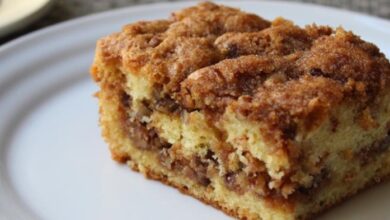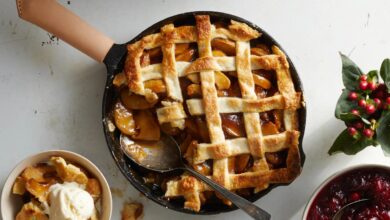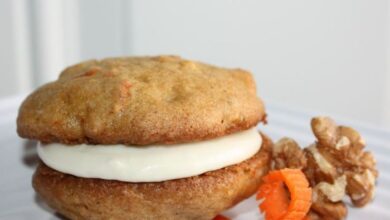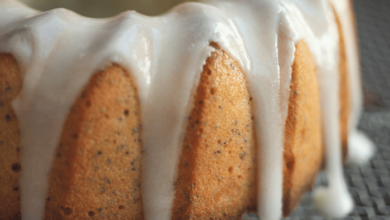
Apple Walnut Canadian Butter Tarts: A Sweet History
Apple walnut Canadian butter tarts are a beloved treat that embodies the heart of Canadian cuisine. These little pastries, with their rich, buttery crust and sweet, gooey filling, have a history as long as the country itself. From humble beginnings as a simple dessert, butter tarts have evolved into a culinary icon, cherished for their unique flavors and comforting appeal.
This blog post delves into the fascinating world of apple walnut Canadian butter tarts, exploring their origins, the secrets of their irresistible flavors, and the special place they hold in Canadian culture. We’ll uncover the history behind their creation, explore the different variations that have emerged over the years, and share tips and tricks for baking the perfect batch of these delightful treats.
Get ready to embark on a journey that celebrates the deliciousness and cultural significance of apple walnut Canadian butter tarts.
History and Origin
The Canadian butter tart is a beloved dessert with a rich history and a unique place in Canadian culture. While its exact origins are debated, it is widely believed to have emerged in the late 19th or early 20th century, likely in the rural areas of Ontario.
Early Origins and Evolution
The earliest butter tarts were simple, consisting primarily of butter, sugar, and eggs. These early versions were often made with a flaky pie crust and were enjoyed as a simple treat or a comforting dessert. Over time, variations began to emerge, with the addition of ingredients like molasses, corn syrup, and nuts.
The inclusion of walnuts, a popular addition in many modern recipes, is thought to have emerged in the mid-20th century, adding a delightful textural contrast and a hint of nuttiness to the classic tart.
The Rise of the Apple Butter Tart
The apple butter tart, a variation that combines the classic butter tart with the sweetness and tartness of apples, emerged in the later half of the 20th century. This variation often incorporates chopped apples into the filling, creating a more complex flavor profile and a satisfyingly chewy texture.
While the exact origin of this variation is unclear, it is believed to have developed organically, reflecting the ingenuity and creativity of Canadian home cooks.
Cultural Significance
Butter tarts have become deeply ingrained in Canadian culture, often associated with family gatherings, bake sales, and special occasions. They are a quintessential Canadian dessert, representing the country’s history, culinary traditions, and sense of community. The popularity of butter tarts extends beyond the borders of Canada, with many variations and adaptations enjoyed around the world.
Ingredients and Variations
The classic Canadian butter tart is a simple yet delightful dessert, with its core ingredients working together to create a rich and satisfying treat. Understanding the role of each ingredient helps appreciate the versatility of this beloved dessert.
Core Ingredients and Their Roles
The core ingredients of a traditional Canadian butter tart are:* Butter:Butter provides the rich, buttery flavor and contributes to the tart’s tender, crumbly texture.
Sugar
Sugar adds sweetness and balances the tartness of the filling.
Eggs
Eggs bind the filling and contribute to its smooth, custard-like texture.
Cornstarch
Cornstarch acts as a thickener, ensuring the filling sets properly and prevents it from becoming runny.
Shortening
Shortening adds flakiness and tenderness to the pastry crust.
Flour
Flour is the base of the pastry crust, providing structure and holding the ingredients together.
Common Variations in Butter Tart Recipes
Butter tarts offer a canvas for culinary creativity, with numerous variations that cater to different tastes and preferences.
Apple walnut Canadian butter tarts are a classic treat, and I always love making them for special occasions. But sometimes, I crave something a little more savory, like these air fryer chicken kiev balls that I recently tried. They were crispy on the outside, juicy on the inside, and a perfect balance of flavors.
But don’t worry, I’ll always have a place in my heart for those buttery, sweet, and nutty Canadian butter tarts!
Filling Variations
Adding Flavor
Apple walnut Canadian butter tarts are a classic dessert that always brings back fond memories of cozy evenings and family gatherings. They’re so satisfying with their sweet, buttery filling and crunchy walnuts. And while I’m on the topic of delicious treats, have you ever tried a yummy pineapple beef steak marinade ?
The tangy sweetness of the pineapple really complements the savory beef, creating a flavor combination that’s simply irresistible. Back to those butter tarts, I’m already planning my next batch – maybe I’ll even try a variation with a touch of cinnamon this time!
Many variations involve adding flavor to the traditional filling. Common additions include vanilla extract, maple syrup, brown sugar, or spices like cinnamon, nutmeg, or allspice.
Nut Additions
Nuts, such as pecans, walnuts, or almonds, can be added to the filling for added texture and flavor.
Fruit Additions
Some recipes incorporate dried fruits like raisins, cranberries, or apricots for a burst of sweetness and tartness.
Cheese Variations
Apple walnut Canadian butter tarts are a delicious treat that’s best enjoyed warm, with a scoop of vanilla ice cream. Making them at home is a breeze, especially if you have a good set of cookware. I always recommend investing in a set of best non toxic cookware for baking, as it ensures your food is prepared safely and without any unwanted chemicals.
Once your tarts are ready, enjoy the sweet and nutty flavors of this classic Canadian dessert!
Some variations include cream cheese or goat cheese in the filling, adding a tangy and creamy element.
Crust Variations
Different Flours
Some recipes use different flours, such as whole wheat flour or oat flour, for a heartier and more textured crust.
Adding Flavor
Adding spices like cinnamon or nutmeg to the crust can enhance its flavor profile.
Shortcrust vs. Pie Crust
Some variations use a shortcrust pastry for a more crumbly texture, while others opt for a pie crust for a flakier and more buttery crust.
Topping Variations
Sweet Toppings
Common sweet toppings include whipped cream, ice cream, or a drizzle of maple syrup.
Nut Toppings
Toasted pecans or walnuts can be sprinkled on top for added texture and flavor.
Fruit Toppings
Fresh berries, sliced apples, or a dollop of fruit preserves can add a touch of sweetness and freshness.
Apple Walnut Butter Tarts
Apple walnut butter tarts offer a unique twist on the classic recipe, combining the familiar flavors of butter tarts with the refreshing sweetness of apples and the nutty crunch of walnuts.
“These tarts are a delightful combination of textures and flavors, with the sweet and tart apples complementing the rich butter tart filling.”
* Recipe for Apple Walnut Butter Tarts:Ingredients:
For the crust
1 1/2 cups all-purpose flour
1/2 cup shortening
1/4 cup cold butter, cubed
1/4 cup cold water
For the filling
1/2 cup butter, softened
1/2 cup brown sugar
1 egg
1/4 cup corn syrup
1 teaspoon vanilla extract
1/4 cup chopped walnuts
1 medium apple, peeled, cored, and diced
For the topping
Whipped cream or ice cream (optional)
Instructions:
1. Make the crust
In a large bowl, whisk together the flour and salt. Cut in the shortening and butter until the mixture resembles coarse crumbs. Gradually add the cold water, mixing until the dough just comes together.
2. Chill the dough
Wrap the dough in plastic wrap and refrigerate for at least 30 minutes.
3. Preheat the oven
Preheat the oven to 350 degrees F (175 degrees C).
4. Prepare the tart shells
On a lightly floured surface, roll out the dough to 1/8-inch thickness. Cut out 6-inch circles using a cookie cutter. Press the dough into greased tart pans.
5. Make the filling
In a large bowl, cream together the butter and brown sugar until light and fluffy. Beat in the egg, corn syrup, and vanilla extract until well combined. Stir in the chopped walnuts and diced apples.
6. Fill the tart shells
Pour the filling into the prepared tart shells.
7. Bake
Bake for 25-30 minutes, or until the filling is set and the crust is golden brown.
8. Cool and serve
Let the tarts cool slightly before serving. Top with whipped cream or ice cream, if desired.
Baking Techniques and Tips
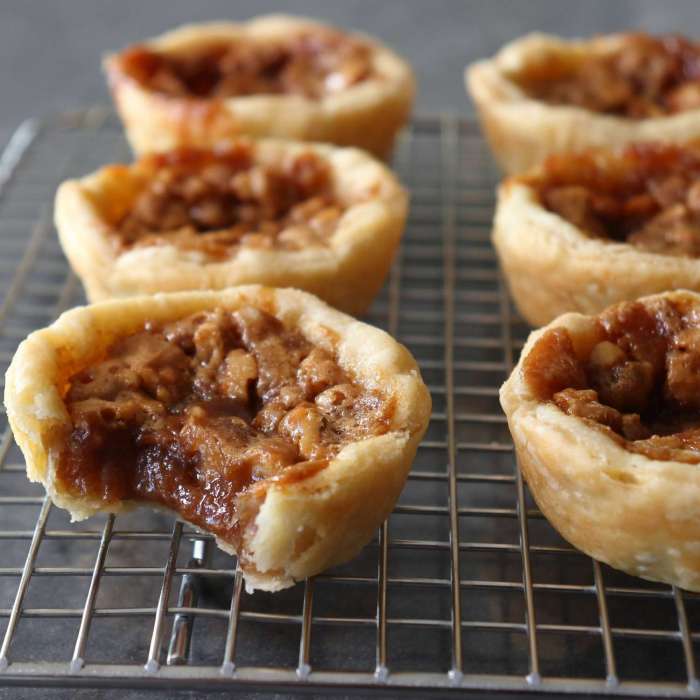
Baking apple walnut butter tarts is a delightful culinary adventure, rewarding you with a sweet and satisfying treat. To ensure your tarts turn out perfectly, a few essential techniques and tips are crucial. This section will guide you through the process, helping you achieve a flaky, golden-brown crust and a rich, flavorful filling.
Baking Time and Temperature
Baking time and temperature are crucial for achieving the perfect butter tart. The ideal baking time for a standard butter tart is approximately 20-25 minutes at 350°F (175°C). However, this can vary depending on the size and thickness of your tart shells.
To ensure your tarts are baked through, use a toothpick or cake tester inserted into the center. If it comes out clean, your tarts are ready. If the toothpick comes out with wet batter, bake for a few more minutes.
Perfect Crust Texture
The key to a perfect butter tart crust is achieving a balance between flakiness and tenderness. Here are a few tips for achieving this:* Chill the dough:Chilling the dough for at least 30 minutes before rolling helps prevent the butter from melting too quickly during baking, resulting in a flakier crust.
Use cold ingredients
Using cold butter and water when making the dough ensures the butter remains in small, separate pieces, contributing to flakiness.
Avoid overworking the dough
Overworking the dough can develop the gluten, resulting in a tough crust. Gently press the dough into the tart pans, ensuring an even thickness.
Blind bake
Blind baking the tart shells for 10-15 minutes before adding the filling helps prevent a soggy crust.
Rich and Flavorful Filling
The secret to a truly delicious butter tart filling lies in the quality of the ingredients and the balance of flavors.* Use high-quality butter:Real butter adds richness and flavor to the filling. For an even richer flavor, use unsalted butter and adjust the sweetness to your preference.
Don’t overcook the filling
Overcooked filling can become dry and crumbly. Keep a close eye on the tarts during baking, ensuring the filling sets but doesn’t become too firm.
Enhance the flavor
Add a pinch of salt to the filling to enhance the sweetness. You can also experiment with different spices like cinnamon, nutmeg, or allspice.
Use fresh ingredients
Fresh apples and walnuts add a delightful crunch and freshness to the filling. Choose apples with a good balance of sweetness and tartness, like Granny Smith or Honeycrisp.
Common Baking Mistakes and Solutions
Baking butter tarts can be a rewarding experience, but there are a few common mistakes to avoid.* Soggy crust:This often happens when the tart shells are not blind baked before adding the filling. Blind bake the shells for 10-15 minutes to prevent this.
Overcooked filling
This can result in a dry and crumbly filling. Keep a close eye on the tarts during baking, ensuring the filling sets but doesn’t become too firm.
Unevenly baked tarts
This can occur if the oven temperature is not consistent. Use an oven thermometer to ensure accurate temperature readings.
Burnt crust
This can happen if the oven temperature is too high or if the tarts are baked for too long. Reduce the oven temperature or shorten the baking time if necessary.
Serving and Pairing
Apple walnut butter tarts are best enjoyed fresh, warm, or at room temperature. Their rich and decadent flavors shine through when served at the ideal temperature, complementing the textures of the buttery crust and the sweet, nutty filling.
Serving Suggestions
Serving apple walnut butter tarts is an art form that can be tailored to any occasion. Here are a few ideas to elevate your presentation:
- Individual Serving: Place a single tart on a small dessert plate, garnished with a dollop of whipped cream or a sprinkle of cinnamon. You can also serve them with a side of vanilla ice cream or a scoop of maple pecan ice cream for a decadent treat.
- Sharing Platter: For a party or gathering, arrange a platter with a variety of apple walnut butter tarts, along with other baked goods or fruit. Consider using a rustic wooden board or a decorative platter to enhance the presentation.
- Dessert Buffet: Incorporate apple walnut butter tarts into a dessert buffet, offering a selection of toppings and accompaniments for guests to customize their tarts. Some popular options include chopped nuts, dried cranberries, fresh fruit slices, or a drizzle of maple syrup.
Pairing Ideas
Apple walnut butter tarts offer a wide range of pairing possibilities, from classic combinations to more adventurous choices. Here are some ideas to inspire your next dessert pairing:
- Classic Pairings:
- Vanilla Ice Cream: The smooth, creamy texture of vanilla ice cream complements the tart’s sweet and nutty flavors, creating a classic dessert pairing.
- Coffee or Tea: The rich flavors of coffee or tea pair well with the buttery and nutty notes of the tart, creating a comforting and satisfying combination.
- Milk or Cream: A glass of cold milk or cream can help cut through the richness of the tart and provide a refreshing contrast.
- Complementary Flavors:
- Maple Syrup: A drizzle of maple syrup enhances the tart’s sweetness and adds a touch of warmth.
- Caramel Sauce: The buttery and sweet notes of caramel sauce complement the tart’s flavors, creating a decadent and satisfying pairing.
- Whipped Cream: A dollop of whipped cream adds a touch of lightness and freshness to the tart, balancing the richness of the filling.
- Adventurous Pairings:
- Sparkling Cider: The tart’s sweetness pairs well with the crisp and refreshing flavors of sparkling cider, creating a unique and festive combination.
- Apple Pie Wine: The fruit-forward flavors of apple pie wine complement the tart’s apple and walnut flavors, creating a harmonious pairing.
- Cheddar Cheese: The sharp and salty notes of cheddar cheese provide a surprising and delightful contrast to the tart’s sweetness.
Serving Temperature
Apple walnut butter tarts are best served warm or at room temperature. Warming the tarts slightly enhances their flavors and creates a more enjoyable texture.
Pairing Table
| Category | Serving Suggestions | Pairing Ideas ||—|—|—|| Classic | Individual serving on a dessert plate, garnished with whipped cream or cinnamon | Vanilla ice cream, coffee or tea, milk or cream || Complementary Flavors | Sharing platter with other baked goods or fruit, dessert buffet with toppings | Maple syrup, caramel sauce, whipped cream || Adventurous | Served with sparkling cider or apple pie wine | Sparkling cider, apple pie wine, cheddar cheese |
Cultural Significance and Regional Variations: Apple Walnut Canadian Butter Tarts
Butter tarts are more than just a delicious dessert in Canada; they hold a special place in the hearts and kitchens of many Canadians, reflecting the country’s diverse culinary landscape and rich history. The humble butter tart has become a symbol of Canadian identity, a culinary tradition passed down through generations, and a source of regional pride.
Regional Variations in Recipes and Traditions, Apple walnut canadian butter tarts
Butter tarts are not just one singular dessert; they come in a multitude of variations, each reflecting the unique culinary traditions of different regions across Canada. This regional diversity is evident in the ingredients used, the baking techniques employed, and the cultural significance attached to these tarts.
Variations in Ingredients
- Ontario: The classic Ontario butter tart is characterized by its simple yet satisfying combination of butter, sugar, eggs, and often a touch of corn syrup. The filling is typically smooth and runny, with a rich, buttery flavor.
- Quebec: In Quebec, butter tarts often feature a thicker, more custard-like filling, with the addition of maple syrup or even rum for a distinct, regional twist. The use of maple syrup, a key ingredient in Quebec cuisine, adds a unique sweetness and complexity to the filling.
- Atlantic Canada: Butter tarts in the Atlantic provinces often incorporate local ingredients like cranberries or blueberries, adding a tart and tangy counterpoint to the sweetness of the filling. The use of local berries reflects the region’s rich agricultural heritage.
- Western Canada: In Western Canada, butter tarts may include additions like chopped walnuts, pecans, or even a touch of cinnamon, adding a nutty and spiced dimension to the traditional recipe. The use of nuts reflects the region’s proximity to nut-producing areas.
Variations in Baking Techniques
- Traditional Baking: In many parts of Canada, butter tarts are baked in small, individual tart shells, often made from a simple pastry dough. The tarts are typically baked until the filling is set and slightly browned on top.
- Deep-Dish Variations: In some regions, butter tarts are baked in a larger, deep-dish pan, creating a more communal dessert. This variation often features a thicker filling and may be topped with a streusel crumble or a dollop of whipped cream.
Cultural Significance
- Family Traditions: Butter tarts are often associated with family gatherings, holidays, and special occasions. Many families have their own secret recipes passed down through generations, making butter tarts a cherished part of their culinary heritage.
- Local Events and Festivals: Butter tarts are celebrated at numerous events and festivals across Canada. The “Butter Tart Festival” in Midland, Ontario, is a prime example, drawing thousands of visitors each year for a weekend dedicated to all things butter tart. This event features a butter tart baking contest, a parade, and numerous vendors offering a variety of butter tart creations.
Other events, such as local fairs and community gatherings, often include butter tart competitions and bake-offs, further highlighting the dessert’s cultural significance.
Map of Canada Highlighting Regions with Distinct Butter Tart Traditions
A map of Canada could visually represent the diverse butter tart traditions across the country. Each region could be color-coded or labeled to indicate the specific variations in ingredients, baking techniques, or cultural significance associated with butter tarts in that area.
For example, Ontario could be highlighted in a shade of yellow to represent the classic, smooth, and runny butter tart filling, while Quebec could be depicted in a shade of red to represent the use of maple syrup in their butter tarts.
The Atlantic provinces could be marked in a shade of blue to represent the incorporation of local berries, and Western Canada could be shown in a shade of green to represent the inclusion of nuts in their butter tart recipes.
Such a map would serve as a visual representation of the rich culinary tapestry of Canada, showcasing the regional variations and cultural significance of this beloved dessert.

